| Textile
The first cotton mill of Hong
Kong was established in 1947. Nowadays, the textiles
industry comprises spinning, weaving, knitting and
finishing of fabrics. It had a total of 1,527 establishments
employing 17,091 workers in 1999, or 7.0% of the local
manufacturing workforce. The exports of textile goods
were HK$9,488 million worth in 1999, accounting for
5.6% of total domestic exports.
Hong Kong is the world’s leading
textile exporter. Besides its export orientation,
the textile industry is a major supplier to the local
clothing industry. In recent years, many textile manufacturers
have shifted low-end production to China and Southeast
Asia, but at the same time invested heavily in capital-intensive
and technologically advanced machinery. Modern machinery
like open-end spinning machines and shuttleless looms
has been widely adopted by manufacturers. Besides,
the industry has also begun to apply variously computer
technology such as computer-aided design (CAD) and
computer-aided manufacturing (CAM).
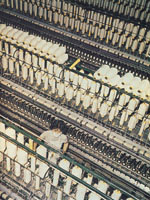 |
|
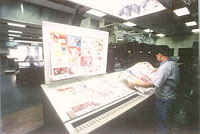 |
| |
|
Textile mills
built in Hong Kong since the war are among the
most up-to-date in the world, with machinery
from Britain, Germany and Japan. |
|
|
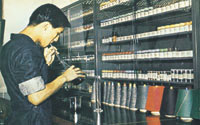
In Hong Kong
industry never stands still. There have been
marked advances in dyeing techniques.
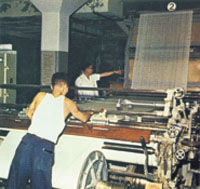
During sizing
the warp is coated with a protective covering for
weaving.

Girls work
under hygienic conditions in Hong Kong's modern cotton
mills.
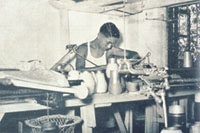
Hong Kong's
first cotton mill was built in 1947. |



